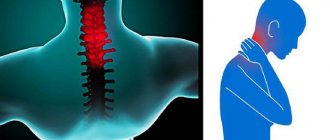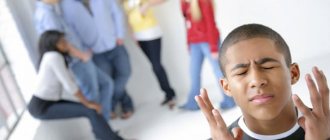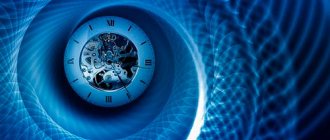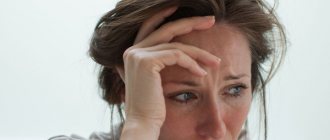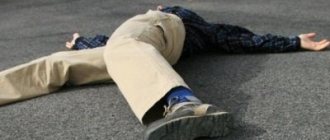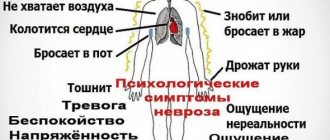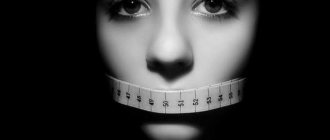Headache after a nervous breakdown
The life of a modern person is filled with various stresses - rush jobs in the workplace, misunderstandings when communicating with other people, family problems. This is quite common. However, not everyone experiences frequent psycho-emotional stress without leaving a trace. Many people report that they get headaches from nerves. Let's look at why this happens and how to protect yourself from unpleasant sensations.
Why do you get headaches when you're nervous?
Nervous headaches usually occur in people engaged in intellectual work. This is due to the fact that the load on the central nervous system is greatly increased. With prolonged nervous tension, the cerebral cortex begins to wear out.
In such circumstances, interruptions occur in the functioning of all internal organs. Disorders in the functioning of the cardiovascular system have a particularly negative impact on well-being - heart rate increases, and sharp changes in blood pressure levels are noted.
That's why my head hurts after nerves.
How does the pathological condition develop?
Severe stress triggers the mechanism for the development of headaches from nervous tension. For example, a quarrel with a loved one, dismissal, passing an exam. It is worth noting that the headache also begins to hurt after pleasant shocks, for example, on a wedding day.
With prolonged stress, nerve cells transmit a signal about interruptions in the coordinated work of internal organs to the central nervous system using long processes - axons. The impulse reaches its target in a matter of moments, therefore, as a response, a nervous headache occurs.
Under what conditions does pain occur?
The main factor influencing the development of the condition, when a headache occurs after nerves, is psycho-emotional shock. However, the likelihood of the manifestation of painful symptoms increases significantly when the following unfavorable conditions are present simultaneously with stressful situations:
- Presence of cardiovascular pathologies. Nerves make the patient even worse, since in such conditions the blood vessels work in emergency mode. That's why my head hurts because of my nerves.
- Intense mental stress. Headaches after nervous tension go away only after proper rest.
- Pinched nerves in the cervical spine. This is facilitated by constantly working at the computer in the wrong position. Many people are interested in what to do if a nerve is pinched in the neck. To begin with, you should constantly monitor the correct position of your back at your desk. You should also take breaks every half hour of work.
- Depressive moods. In such conditions, the slightest trouble knocks a person out of his mental balance. This can lead to headaches from nerves.
Pathological sensations associated with stressful situations
Often a person cannot understand that his headache is caused by nerves. This happens because many are skeptical about the deterioration of well-being due to nervousness. The danger lies in the fact that while the patient tries to look for the cause in more serious diseases, the condition only worsens, and the headache hurts even more from the nerves.
There are several characteristic signs indicating that the headache is caused by nerves. For example:
- memory has deteriorated;
- lethargy, decreased vital activity;
- sleep disorders;
- A nervous tic appears periodically.
Characteristic symptoms of a nervous headache
The above are signs that can only indicate that a headache is caused by nervousness. The symptoms listed below indicate a ninety percent chance of nerve headaches:
- Unilateral localization of painful sensations. In advanced cases, unpleasant manifestations cover the entire head.
- The pain is moderate and relatively easily tolerated.
- With the slightest stress, the pain intensifies.
- Taking painkillers for headaches is not effective enough.
- The condition worsens in the evening and at night.
Important! It is impossible to independently determine the cause of poor health; consultation with a professional is required.
Diagnostic methods
Due to the fact that the condition of a headache from nerves is quite difficult to identify, an initial survey of the patient by a medical professional is of great importance.
At this stage, you should be as frank as possible with the doctor and tell in detail about your feelings.
For example: “after I get nervous, a headache appears” or “at first I got nervous at work, then my health worsened.”
In addition to a confidential conversation with a specialist, the patient will be prescribed the following procedures:
- Ultrasound of the heart muscle and blood vessels;
- MRI, CT of the head;
- blood chemistry;
- radiography.
Source: https://novosibmemorial.ru/golovnaja-bol-posle-nervnogo-sryva/
How the disease develops
Stress is one of the factors leading to headaches. Migraine occurs when you become nervous due to troubles at work or at home. The peculiarity of the structure of nerve cells is the presence of long processes: dendrite and axon. The main purpose of the dendrite is to generate pain impulses when body functions are impaired. The axon transmits the signal along the fibers to the brain.
Nervous headaches occur mainly in people suffering from heart failure. The cause of the disease may be injury or infection affecting brain tissue. Emotional stress causes quite severe pain in the skull.
Tension headache: symptoms, how to treat, what to do if you have a headache from nerves
The head contains receptors that act on the brain. Often, after stress, a headache occurs because worries or conflicts only increase the unpleasant sensations.
Headaches can occur in all people, but those who have heart problems are more susceptible to them. Unpleasant throbbing pain appears due to overstrain of nerve endings.
Can you get a headache if you get too nervous?
Head pain from nerves
Development of the disease
Stress is one of the causes of headaches. The structure of nerve cells consists of long shoots - dendrite and axon. The role of the dendrite is to regenerate pain impulses at the moment of malfunction of the body. The axon sends a signal to the brain.
People who have heart problems also get headaches from stress. The cause may be injury or infection that affects the tissues of the head.
Emotional intensity causes very strong pain.
Types of headaches
Causes of pain
Most headaches occur due to a mental disorder. Headaches and muscle tension occur due to long-term and chronic stress.
Muscle tension can be caused by prolonged sitting or an uncomfortable sleeping position.
Chronic headache occurs due to tension in the neck muscles, eye muscles and scalp aponeurosis. The formation of the disease is influenced by:
- tonic muscle spasm;
- biochemical shift;
- spasm of blood vessels, which are responsible for the severity of pain;
- lack of serotonergic systems;
- depression;
- poor functioning of the antinociceptive system.
Head pain causes a lot of discomfort
Symptoms of the disease
Long-term stress has a negative effect on the body. The intensity of pain depends on the stage of the disease and the individual characteristics of the person. During a headache, a person cannot concentrate on work.
Noise in the head after stress has a bad effect on all organs, especially the brain. The disease manifests itself in the form of the following signs: fluctuations; pinching, bursting.
Nervous tension headaches affect only part of the head. If the volume of the lesion is large, then pain is felt throughout the head. When blood vessels narrow, nerve cells give a sign of circulatory failure. The disease develops if a person is in a state of nervous exhaustion. That is why he feels pain constantly. Pain can appear even with the slightest excitement.
Diagnostics
If you have headaches, dizziness after stress, or have suffered a head injury, you should consult a doctor.
During the examination, the patient undergoes a number of procedures, including a fundus examination session, echoencephalography, cerebrospinal fluid analysis, etc. A disorder of the brain leads to frequent pain. Therefore, to establish an accurate diagnosis, you need to undergo an extensive examination. After the examination, a diagnosis is made and treatment is prescribed.
Echoencephalography - diagnostic method
Treatment
There are different ways to treat headaches caused by stress. The most popular treatment methods are medications, exercises and gymnastics. Let's take a closer look at each method.
Treatment with medication
Stress can provoke unpleasant sensations in the head. To get rid of pain, you need to take drugs that act on nerve endings (for example, Pentalgin or Fintepsin). To relieve tension in the head, it is necessary to normalize the emotional background. You can use antidepressants for this.
People suffering from hypertension can relieve painful symptoms with medications to lower their blood pressure. To normalize blood circulation in brain cells, antispasmodic drugs are used (for example, “No-shpa” or “Papaverine”). Medicines act on muscles that are tense. When the drug begins to act, the tissues relax.
The patient's blood vessels begin to dilate and blood circulation returns to normal.
When taking medications, consult your doctor
Any medications have side effects and contraindications. Therefore, before taking medications, you need to consult a specialist.
Treatment with exercises
You can relieve tension in your head and strengthen your nerves with exercise. All actions in the body are carried out by the nervous system. There is also reverse contact, which stimulates muscles and organs. Therefore, exercise has a good effect not only on the body, but also on the nervous system.
Constant tension in the head appears due to mental overload. In such cases, you can not rush to the pharmacy to buy medicine, but relieve stress yourself. To get rid of headaches after stress, you can take a walk in the fresh air. It is necessary to do regular exercises every day for 10–15 minutes.
If you have a sedentary job, it is advisable to exercise 2-3 times a day to strengthen your muscles. For people who have heart problems, dynamic exercises are useful. During such exercises, the muscles are charged with blood, and the number of open capillaries increases. Gymnastics helps develop your shoulders, arms and legs.
Makes the body and posture beautiful, normalizes breathing.
Gymnastics for the face
There are several exercises that target the muscles of the face and head. They help treat headaches and tension. It is advisable to do them immediately when the first symptoms of the disease appear. Before performing the exercises, you need to stand facing the mirror to ensure that they are performed correctly. For facial gymnastics there is the following scheme:
- Raise your eyebrows and try to relax your facial muscles. It is necessary to make such movements separately with each eyebrow. You can help yourself by holding one eyebrow with your hand.
- Close your eyes and bring your pupils to the middle. Next, relax again and return your eyes to their previous position.
- Frown your eyebrows, then relax.
- Open your mouth wide, then relax, returning it to its previous position.
- Open your mouth and move your jaw in one direction or the other.
- Wrinkle your nose and relax your facial muscles again.
Gymnastics for the face
In addition to such gymnastics, you can make different grimaces. This behavior will help relieve tension in various forms of stress.
Gymnastics for the neck
When you have a headache from nerves, you can do gymnastics for the neck muscles:
- You need to point your neck down and stretch it forward, and your chin should touch your chest. Then return to normal state. You need to do the exercise 3-5 times.
- In a sitting position, tilt your head back. Do this 3-5 times.
- Rotate your head in different directions. Tilt your head either to the right or to the left shoulder.
- Do bends 3-5 times.
Neck massage for pain
Folk remedies
Treatment with folk remedies can be done at home, on your own. To do this, a person takes a warm bath, but with the help of special mixtures.
Bath with 100 g of sea salt, 2 tbsp. l. pine extract. You must take a bath for 10 days. Steam 200 g of pine needles in 5 liters of water, keep on fire for 5 minutes. Then strain and pour the broth into the bath. You need to do the procedure before going to bed.
Pine bath relaxes
You can prepare tinctures for internal use.
- Half a large leaf of golden mustache, 75 g of grated horseradish, 250 g of finely chopped oranges, 150 g of sugar and 0.5 liters of red wine. The container with the ingredients is placed in a water bath and boiled for 1 hour. Then strain well and drink 75 ml 2 hours after eating.
- Place 15 g of dried lemon balm in a thermos and pour 1 cup of boiling water. Leave for 1 hour, strain and drink 1-2 tbsp. spoons 5-6 times a day.
Preventive actions
To prevent tinnitus and dizziness at times of stress, several conditions must be met:
- move more;
- engage in physical exercise, it will help improve vascular tone;
- ignore unpleasant conversations, be less nervous and conflict with people.
Those people who cannot control their emotions are nervous. Nervous tension can be the first step on the path to a migraine.
Conclusion
Often after stress a person experiences pain in the head and ears. It can be of a different nature, it all depends on the severity of the disease. If the pain cannot be tolerated, a person should definitely go to the hospital and be examined. The duration and method of treatment depends on the diagnosis itself.
Source: https://psyhoday.ru/stress/bolit-golova-ot-nervov.html
Diseases in which shooting cranialgia is possible
The peculiarity of shooting cranialgia is that it is a harbinger of a more serious disease, which has a different pathogenetic nature. The condition is quite painful for the patient. It often occurs due to a violation of the nerve endings located in the facial muscles, ears, eyes or olfactory organs. Sharp pain can also appear due to an inflammatory process in the bones or joints of the face, due to a pathological condition of the nerves, due to altered intracranial impulses in the nerves, or due to a neurovascular disorder. Below is a list of all diseases where the main symptom is shooting pain in the head. They arise due to:
- Neuralgia or neuritis of the trigeminal nerves, pterygopalatine ganglia
- Alcohol or toxic intoxication
- Inflammatory processes in the eyes that affect the nerve endings and are accompanied by the release of pus
- Otitis accompanied by discharge of pus
- Hunt syndrome
- Acute sinusitis
- Articular arthritis in the lower jaw area
- Osteomyelitis in the jaw where the cranial nerves pass
- Intervertebral hernia
- Cervical osteochondrosis
- Neuralgia that occurs due to injuries
- Formation of cysts or abscesses in the brain
- Aneurysms
- Neuralgia of the glossopharyngeal nerves
- Arteritis in the temporal region or occipital region
In addition, painful shooting sensations can be located in any part of the head:
- In the frontal region, pain often occurs in the right hemisphere. They often arise due to human exposure to drafts.
- A large number of nerve endings pass through the parietal region, which is why pain sensations are repeated periodically.
- In the back of the head, shooting cranialgia occurs alternately on both sides of the head. Its time of occurrence is either in the morning, after an unsuccessfully chosen position, or after a draft. In addition, pain may appear after turning the head and affect the parietal region or ears.
- In the temple area. There are quite a large number of factors for shooting pain. Many nerve endings pass through the temporal part of the head. Pain may appear from light touches to the skin in a specific place. In addition, this kind of pain can occur due to chewing movements.
Elderly patients feel this pain along with numb parts of the face, increased salivation or redness of the skin. Pain can also reach the shoulder or neck areas. Provoking factors are:
- Chewing movements;
- Brushing with a toothbrush;
- Eating food;
- Itching of the skin;
- Heavy, dry cough;
- Noise;
- Bright lighting;
- Cold;
- Overexertion after physical activity.
Clinical features of different types of shooting headaches
Most often, discomfort occurs in one of the hemispheres of the brain - right or left, or in the back of the head. In practice, double-sided lumbago is not observed. Its location can be in any part of the brain - in the forehead, crown, temple, back of the head. In addition, it can shoot with an accurate line into the area of the face, neck, jaw or ears. The localization of pain borders on the anatomical location of the damaged nerve endings and the zone of its innervation.
- Pain in the forehead . As usual, pain appears on the right side near the facial nerves above the eyebrows; unexpectedly, the location hurts after pressing on this point.
- In the crown area. Pain in this localization is of a reflected nature. The crown is the end point where many nerve trunks branch. When pressing on this place, the appearance of shooting cranialgia is provoked. Such pains have a paroxysmal character; they occur in the form of an attack unexpectedly and sharply. The attack either stops after some time or becomes chronic.
- In the temple area. A large number of nerve endings and pain receptors pass through the temple. Pain sensations occur in the right side of the brain, sometimes on the left. The main reason for this is drafts. Pain, as in the previous case, can appear from a simple touch in a certain place. In addition, chewing movements can also provoke the appearance of such pain, since pathology of the left articular joint in the localization of the junction of the temple and lower jaw is common.
- In the back of the head . Occurs due to sudden turns of the head. Its location can be on any side. Some people have clear trigger zones that, when touched, cause shooting pains.
Tension headache - symptoms and treatment
Tension headaches occur due to stress, acute or chronic, as well as other mental problems, such as depression.
Headaches with vegetative-vascular dystonia are also, as a rule, tension pains. Since vegetative-vascular dystonia (VSD) itself is nothing more than a physical manifestation of an anxiety disorder.
Symptoms of tension headaches include:
- a feeling of tightness in the head area (it may feel like a tight ring is encircling the head);
- pressure in the head;
- shooting pains in the head, eyes, facial area;
- strange sensations of “frozenness” of the head and its numbness;
- feeling of bloating (as if it's about to burst).
In addition to pain directly in the head, tension pain usually affects the back of the neck and shoulders, down to the area between the shoulder blades. Both the neck and shoulders also become tense.
Sometimes it seems that the neck is taking some unnatural position, for example, the head seems to be pushed forward or, conversely, tilted back.
In addition, discomfort may occur in the scalp. Sometimes such sensations are perceived as pain, sometimes as a burning sensation.
Pain and a feeling of tension can cover the entire head, neck and shoulders. And they can be localized only in one area. Moreover, this localization can be either stable or constantly shifting.
All of these symptoms can appear simultaneously, or they can come one at a time.
Tension headaches can occur in the context of an obvious stressful event and anxiety. Or it may come out of nowhere.
The intensity of pain varies from barely noticeable to extremely severe.
Pain may occur only occasionally. Or they can visit regularly and even be virtually constant.
Quite often, tension headaches occur simultaneously with migraines. In this case, additional symptoms appear. Namely:
- throbbing pain in the head;
- pain in only one side of the head;
- nausea to the point of vomiting;
- hypersensitivity to light and sounds;
- visual impairment.
Causes of tension headaches
Pain of this type always occurs against a background of nervous tension, which can be short-term acute stress, chronic anxiety (CA), depression, or insomnia.
Mental experiences lead to hypertonicity of the muscles of the head, neck, face, and shoulders.
Acute stress can cause sudden muscle spasms, while chronic anxiety can cause constant muscle tension. In either case, the muscles become excessively hard and painful. This leads to the development of tension headaches and its famous symptom, the feeling of a hoop squeezing the head.
Once a tension headache occurs, it often provokes the development of migraine, which is vascular in nature. Migraine itself has a myriad of causes. And it is well known that stress and the resulting muscle hypertonicity with tension headaches are one of the triggers of migraines.
How to get rid of tension headaches
Tension headaches can occur occasionally, periodically, or be chronic.
The tactics for eliminating pain depend on how often they come.
Treatment of periodic pain
The simplest and surest way to eliminate a headache is to take painkillers (Citramon, Paracetamol, Aspirin, Ibuprofen, Nurofen, etc.).
Non-drug approaches can also be used:
- you can close your eyes and massage your temples for a few minutes;
- take a hot shower;
- go for a professional massage of the cervical-collar area.
Sometimes it helps to just lie quietly. And sometimes, on the contrary, go for a run or move actively.
Non-drug methods are less effective than taking medications. But they make it possible to relieve minor headaches, as well as reduce the dose of medication for intense pain.
Treatment of chronic pain
In cases where depression or persistent anxiety occurs, tension headaches often become virtually constant. Frequent use of painkillers, more than twice a week, can also contribute to the development of periodic pain into chronic pain. Especially when using medications with caffeine and/or codeine.
Getting rid of chronic headaches is much more difficult. And taking medications is not the best option here.
Taking large doses of painkillers or switching to stronger drugs is dangerous for health, since all such drugs, when used regularly, have a lot of severe side effects.
How to be?
Unfortunately, achieving complete recovery from anxiety disorder or depression is extremely difficult. Some people simply cannot do this, since such mental disorders cannot be treated with medications alone.
However, it is still necessary to relieve pain in the head area. How?
Before you begin to rid yourself of chronic tension headaches, you need to consult a doctor and make sure that the pain in your head is actually caused by psychological factors. And it is not somatic in nature.
- First of all, you need to master the technique of complete muscle relaxation.
- You can try doing a self-massage of the back of your head.
- Stop taking painkillers, as their frequent use only maintains the chronic nature of the pain.
- Begin to move more actively, eat well and drink adequate amounts of water throughout the day.
Many neurotics suffering from chronic tension pain begin to immeasurably spare themselves and take care of their precious health. They are afraid to lift a finger.This approach to treatment only aggravates the condition, since, firstly, it drives the patient into a hole purely psychologically, and, secondly, it negatively affects the functioning of the muscles that are to blame for this type of headache.
- Normalize sleep.
If you cannot achieve this on your own, you may need to take sleeping pills. In any case, for chronic headaches, night rest must be optimized without fail.
And finally, the most important thing.
Like all other physical manifestations of mental problems, be it anxiety, depression, VSD, chronic tension headache is largely obsessive in nature. Very often it occurs immediately after waking up, when a neurotic person, opening his eyes, is already prepared for the fact that he should have a headache.
The more a person suffering from certain physical symptoms of neurotic conditions thinks about these symptoms, the more clearly they show themselves.
Source: https://nevrozanet.ru/trevoga-i-fobii/simptomyi/fizicheskie/golovnaya-bol-napryazheniya/
How to get rid of shooting headaches
Why do lumbagoes occur in the head?
The causes of the disease can be divided according to the signs of pathology.
The structure of the peripheral nerves is damaged. The headache occurs at the site of the affected nerve and is accompanied by sharp impulses.
Damage to nerve fibers occurs in the following pathologies:
The processes of the occipital nerves are damaged. The spinal nerves are compressed and problems with the spine arise:
- cervical osteochondrosis,
- hernias,
- protrusion,
- spondylosis.
Compression of the occipital nerve often causes lumbago in the head.
Diseases of the eyes and ears. Pain occurs due to infections and inflammation of the related nerves. This is a sign of chronic diseases:
Shooting pain also appears due to pathologies that develop near nerve branches:
- abscesses and cysts,
- aneurysms,
- osteomyelitis.
Symptoms and locations
Shooting pains in the head come from a neurogenic nature. Pain syndromes are provoked by injuries and inflammations in the head. Also, such manifestations can cause untreated diseases.
Typical signs of cranialgia:
In the head, shooting pain always occurs on one side. It is difficult to find the shooting point and patients indicate only the painful area. Painful sensations torment a person with unexpected attacks. Jerking pain appears out of nowhere and for no reason. Shooting cranialgia should not be considered an independent pathology and should only be dealt with the symptoms.
Symptoms of tension headaches
Ecology of Health: Stress is a natural process that is a response to the need to adapt to the environment...
By stress we mean tension caused by various difficult situations and tiring circumstances.
At the same time, stress can lead to psychological disorders and negative psychosomatic reactions.
It should be noted that stress can be accompanied by various symptoms, which may be more or less intense. In some cases, we may experience mild pressure in the head or migraine-like headaches.
Subscribe to our INSTAGRAM !
The nature of stress symptoms depends on the individual characteristics of each person. So, for some, nervous tension is accompanied by migraines, headaches, and insomnia. Others begin to experience severe weakness.
If a headache bothers a person more than 2 times a week and does not disappear for several months, we can talk about its chronic nature .
In this case, headaches can be caused by both physical (for example, allergies that cause sinusitis) and mental factors (severe anxiety).
As for mental factors, most often such headaches are caused by stress.
Some causes of headaches
- Stress
- Keeping the head in the same position for a long time
- Prolonged work at the computer
- Incorrect head position during sleep
- Strain and fatigue of the eye muscles
- Smoking, drinking alcoholic beverages and caffeine abuse
- Sinusitis and nasal congestion
- Colds and flu
Headache caused by stress has nothing to do with disruption of brain structures and other serious diseases.
The roots of stress must be found in chronic anxiety. We must remember that there is a huge difference between these two concepts - thinking and worrying .
When we think, we try to find solutions to existing problems. Anxiety causes us a kind of paralysis of thinking when we become fixated on the same thought. It tires our intellect and causes headaches.
In psychology, the field is experiencing intense interest in studying this disorder. It is known that stress affects the chemical processes occurring in the human brain and disrupts the harmonious state of the muscles, vertebrae and nerves of the skull.
Increasing stress gives us headaches.
Mild and transient stress does not cause any harm to our health. It’s another matter if nervous tension becomes chronic and forces our body to be constantly on alert. This inevitably leads to a weakening of our body’s defenses, causing us weakness, fatigue, headaches, etc.
- Stress-induced headaches occur as a result of contraction of the neck muscles and tension of the scalp.
Symptoms of stress headaches
- Long-lasting, low-intensity headaches that cause a lot of discomfort. Such attacks can be isolated or repeated daily.
- The pain covers the entire head, intensifying in the temporal region, back of the neck and scalp.
- Weakness and loss of strength
- Difficulty falling asleep
- Muscle pain (shoulders and upper back)
- Increased sensitivity to weather changes, noise and light.
While mild headaches can be treated with home remedies, severe and chronic headaches require the attention of a medical professional.
How to Reduce Stress-Induced Headaches
In addition to headaches, stress can cause us to experience muscle tension and jaw clenching . All this can lead to intense pain that reduces our quality of life.
This is why it is so important to be able to competently manage situations that negatively affect our mood.
The following recommendations will help you with this:
- Spend more time on hobbies that bring you pleasure: listen to music, read, play sports, dance, spend time with your pets.
- Pay attention to relaxation, using deep breathing techniques and meditation.
- Try to make your life easier: analyze which tasks require mandatory completion, and optimally organize your time.
- Don't be afraid to seek support. When we communicate with loved ones and friends, it becomes easier for us to solve existing problems and control stress.
- Drive away negative thoughts. This will make it easier for you to cope with stressful circumstances.
- A good mood is the best way to deal with stress. When we feel good, our body produces endorphins, which, in turn, stimulate a positive approach to solving life's difficulties.
- Physical exercise also helps us cope with nervous tension and is a good prevention of stress.
- Get a massage more often. You can ask your partner about this or seek help from a professional massage therapist.
- If the cause of your headaches is the cold, make sure you are warm.
- Pay attention to the position of your body while sleeping. The same goes for your posture while reading, working and playing sports. Remember that your sleep and rest should be healthy and restorative.
- Keep your neck and shoulder muscles in shape by performing appropriate physical exercises. Published by econet.ru. If you have any questions on this topic, ask them to the experts and readers of our project here .
PS And remember, just by changing your consumption, we are changing the world together! © econet
Source: https://econet.ru/articles/178562-simptomy-golovnoy-boli-vyzvannoy-nervnym-napryazheniem
What can cause the disease
Shooting headaches often occur in people with pathology of the cervical spine. For example, osteochondrosis with this disease has a huge risk of feeling a sensation of shooting in the neck against the background of pinched blood vessels and arteries. Where there is most curvature of the spine, such disorders are sometimes the main place for pain localization.
Migraine
This form of the disease also contributes to the development of shooting pain in the head. This is especially true for those who often experience long-term migraine syndrome. Women who have already had similar experiences in their family are more susceptible to this. Often they are the ones who are forced to suffer from unilateral neurological pain in the head.
Intracranial pressure
You can talk about this ailment with shooting pain if the sick person has ailments in the temporal region. Its strength can be different, it all depends on the level of influence of the cerebrospinal fluid on the structures of the brain. Sometimes this can cause the patient to exhibit symptoms of seizures, dizziness, nausea and a gag reflex.
Ear infection
The cause of the shooting pain in the head is quite reasonable, perhaps purulent otitis media or sinusitis. The fact is that any inflammatory manifestations in the middle ear subsequently, if the disease is not treated on time, can lead to a large accumulation of purulent formations. Thereby causing irritation of nerve receptors in a person suffering from otitis media or sinusitis, provoking a shooting headache.
To prevent this in any form of otolaryngological diseases, it is important to be treated under medical supervision. Drink antibacterial drugs aimed at eliminating pus, attend physiotherapeutic procedures in order to get rid of the inflammatory process
Trigeminal neuralgia
If, after an injury, a person’s ternary nerve is damaged, then as a result he may experience shooting pains in the head, photophobia, lacrimation, and changes in taste sensations. In this case, as a rule, anticonvulsants are prescribed to eliminate the disease. Occasionally, surgical intervention may be necessary; it is necessary in case of inserting a special plate into the area of squeezing the blood vessels.
Arthritis
The symptoms of arthritis are somewhat similar to those of a migraine. However, there is a difference; arthritis; its main cause is the pathology of the temporomandibular joint. Otherwise, it is also called temporal arteritis, which occurs more often among older people. The consequence of this disease is an inflammatory process and aneurysm of the carotid artery; more often, it is this cause that causes discomfort in the temporal and occipital regions of the brain.
Headache: when to worry and what to do
Almost all of us have experienced headaches, and most of us have had them many times. A minor headache is nothing more than a nuisance that can be relieved with an over-the-counter pain reliever, food or coffee, or a short rest. But if the headache is severe or unusual, there is reason to worry about a stroke, tumor or blood clot.
Fortunately, such problems are rare. However, it is important to know when a headache needs immediate attention and how to control the vast majority of headaches that are not life-threatening.
What causes headaches?
Doctors do not fully understand the cause of most types of headaches. They know that the brain tissue and skull have nothing to do with it, since there are no nerves in the brain or skull that recognize pain.
But blood vessels in the head and neck, as well as tissues surrounding the brain and some large nerves that exit the brain, can signal pain. The scalp, sinuses, teeth, muscles and joints of the neck can also cause headaches.
There are more than 300 types of headaches, but the cause of only about 10% of them is known. The rest are called primary headaches.
When a headache is a cause for concern
Many types of headaches can be managed on your own. Your doctor may prescribe medication to control most more severe headaches. However, some types of headaches require immediate medical attention, and here are the signs that you should see a doctor :
- Headaches that first develop after age 50
- Serious change in headache patterns
- Unusually severe headache
- Headache that gets worse with coughing or movement
- Headaches that get worse all the time
- Changes in personality or mental function
- Headaches that are accompanied by fever, neck stiffness, confusion, decreased alertness or memory, or neurological symptoms (blurred vision, slurred speech, weakness, numbness, or seizures)
- Headaches that are accompanied by painful redness of the eyes
- Headaches that are accompanied by pain and tenderness in the temporal region
- Headaches after a blow to the head
- Headaches that interfere with normal daily activities
- Headaches that come on suddenly, especially if they interfere with sleep
- Headaches in patients with cancer or immune system disorders
Let's talk briefly about some of the main primary headaches.
Tension headache
Occurring in approximately 75% of adults, tension headaches are the most common of all headaches. A typical tension headache is characterized by a dull, squeezing pain on both sides of the head.
When a tension headache is severe, a person may feel as if their head is being squeezed in a vice. Your shoulders and neck may also hurt. Some tension headaches are caused by fatigue, emotional stress, or problems related to the muscles or joints of the neck or jaw.
Most last between 20 minutes and two hours.
Occasional tension headaches can be managed on your own.
Over-the-counter pain relievers such as acetaminophen (Tylenol, other brands) and nonsteroidal anti-inflammatory drugs (NSAIDs) such as aspirin, naproxen (Aleve, other brands) or ibuprofen (Motrin, Advil, other brands) often help.
However, follow the directions on the label and never take more than you should. A heating pad or warm shower will also help; some people feel better after taking a nap or eating a snack.
Migraine
Migraines occur less frequently than tension headaches, but they tend to be much more severe. They are 2-3 times more common in women than in men (6-8% of men experience migraines).
A Harvard study of 20,084 men aged 40 to 84 found that having migraines increased the risk of heart attacks by 42%, so men with migraines should be mindful of their headaches.
70% of migraine sufferers have at least one close relative experiencing the same problem.
Typically, people with migraines are sensitive to the same triggers. These include changes in weather, sleep patterns, fatigue, stress, bright lights, loud noises, and eating disorders.
Migraines often begin in the evening or during sleep. For some people, attacks are preceded by several hours of fatigue, depression, lethargy, or irritability and anxiety. Because migraine symptoms vary widely, at least half of all migraine sufferers think they suffer from sinus pain or tension headaches rather than migraines.
About 20% of migraines begin with one or more neurological symptoms called aura. Vision complaints are the most common. Some patients develop aura symptoms without headache; they often think they are having a stroke rather than a migraine.
In typical cases, the pain is concentrated on one side of the head, often starting around the eye and temple, spreading to the back of the head. The pain is often severe and described as throbbing. A common symptom is nausea. Without effective treatment, migraine attacks usually last between 4 and 24 hours.
If a patient notices a migraine in its earliest stages, it can be controlled with over-the-counter pain medications. Acetaminophen, aspirin, ibuprofen, naproxen, and a combination of pain medications and caffeine are effective. The anti-nausea drug metoclopramide (Reglan) may increase the activity of NSAIDs.
When prescription medications are needed, most doctors prescribe triptans, which are available as tablets, nasal sprays, or shots that patients can learn to administer themselves.
Talk to your doctor to find the best migraine treatment for you.
Remember that abuse can lead to rebound headaches and drug dependence.
Cluster pain
Cluster headaches are rare but very severe. Although cluster headaches can affect anyone, they usually affect middle-aged men who smoke.
The problem gets its name because the headaches tend to occur in clusters of one to eight headaches per day for 1 to 3 months every year or two, often at the same time of year. The pain is always concentrated on one side of the head and is very severe.
The eye on the affected side becomes red and watery, the eyelid may droop, and the nose may run or be stuffy. The attack begins abruptly and lasts from 30 to 60 minutes. Most sufferers become restless and agitated during an attack; Unable to sit still, they walk, run, or bang their heads against the wall.
The pain may be accompanied by nausea and sensitivity to light and sound.
High flow oxygenation soon after the onset of a headache often helps stop the attack. often effective for cluster headaches, especially when given by injection. Other triptans may also help. Some patients prefer lidocaine nasal drops, dihydroergotamine injections, or other treatments.
Treatment of shooting cranialgia
It is not recommended to self-medicate shooting pains, as this can be detrimental to the body. The condition will begin to worsen and the disease will progress. The treatment itself should be prescribed by a doctor based on the diagnosis, the identified factor in the occurrence of pain, as well as their nature.
Often, osteochondrosis is a factor in the appearance of shooting cranialgia. It is necessary to undergo diagnostics in order to promptly prevent degenerative changes in the spine. When there is a shooting in the head for this reason, a course of medication, which includes the use of painkillers, anti-inflammatory and relaxants, the pain is relieved. Additionally, you can go to
- massotherapy;
- manual therapy;
- physical therapy;
- physiotherapy;
- iontophoresis;
- magnetic therapy;
- current therapy that stops pain attacks.
If the problem is an inflammatory process, then you need to pay attention to the ears. Otherwise, there is a risk of contracting an infection that affects the body in the form of lumbago in the brain.
How to Reduce Stress-Induced Headaches
Let's list a few effective actions that will help when your nerves greatly worsen your well-being:
- Peace. The patient will need to lie down in a dark, quiet room and relax.
- A cup of green tea. The drink will help you calm down and come to your senses.
- If a nerve is pinched, you will need to do a light self-massage of the cervical area.
- Aromatherapy. Inhaling the vapors of the following essential oils helps a lot: tangerine, rosemary, clove, lavender.
- Deep sleep. After two to three hours of sleep in a calm environment, your health will improve.
Causes of headaches after a bath
Diagnostics
If there is a suspicion that the headache is caused by stress, or the manifestations listed above are present, you should consult a neurologist.
The specialist will analyze the complaints and features of the clinical picture, prescribe tests and instrumental research methods. This will eliminate the possibility of pathological processes and organic problems in the body. Most often, if a tension headache is suspected, a biochemical blood test is performed, blood pressure and temperature are measured, and a CT or MRI is performed.
Therapeutic procedures for nervous headaches
After the patient has been diagnosed, the doctor will select the appropriate treatment for headaches caused by nerves. Let's consider the most effective ways to eliminate pathological symptoms.
Treatment with medication
There is no universal cure for nerves and stress. Depending on the individual characteristics of the course of the disease, the patient is prescribed:
- Psychotropic drugs - Melipramine, Reboxetine, Pirlindol, Imipramine.
- Sedatives - Persen, Nevrohel, Nervoflux, Dormiplant.
- Analgesics - Askofen, Anopyrin, Phenacetin, Methindol.
Important! Any medications can only be taken if prescribed by a doctor.
Treatment with exercises
Stress can be not only psychological. Lack of physical activity or lack of it is also a stressful load for the body. Therefore, daily exercise will help stabilize the psycho-emotional background and improve well-being.
Gymnastics for the face
The following movements performed using facial muscles will help reduce pain from the nerves:
- slowly raising and lowering the eyebrows for five minutes;
- imitating a scream, for this you will need to open your mouth wide and freeze in this position for a few seconds;
- alternately moving the chin forward and returning to its normal position.
Exercises must be performed in combination daily.
Gymnastics for the neck
Neck exercises will help relieve pain after nervous stress:
- tilting the head towards the chest as much as possible;
- rotation of the head first clockwise, then counterclockwise;
- smooth rotation of the head left and right.
All movements must be repeated at least ten times.
Folk remedies
We list the most effective folk remedies for headaches caused by nerves:
- herbal medicine, herbal decoctions, infusions, tinctures help well;
- compresses, depending on the diagnosis, warm or cold compresses are used, as well as from natural ingredients, such as lilac or cabbage;
- relaxing salt baths;
- juice therapy, cabbage, beet, tomato, potato juices are most suitable.
